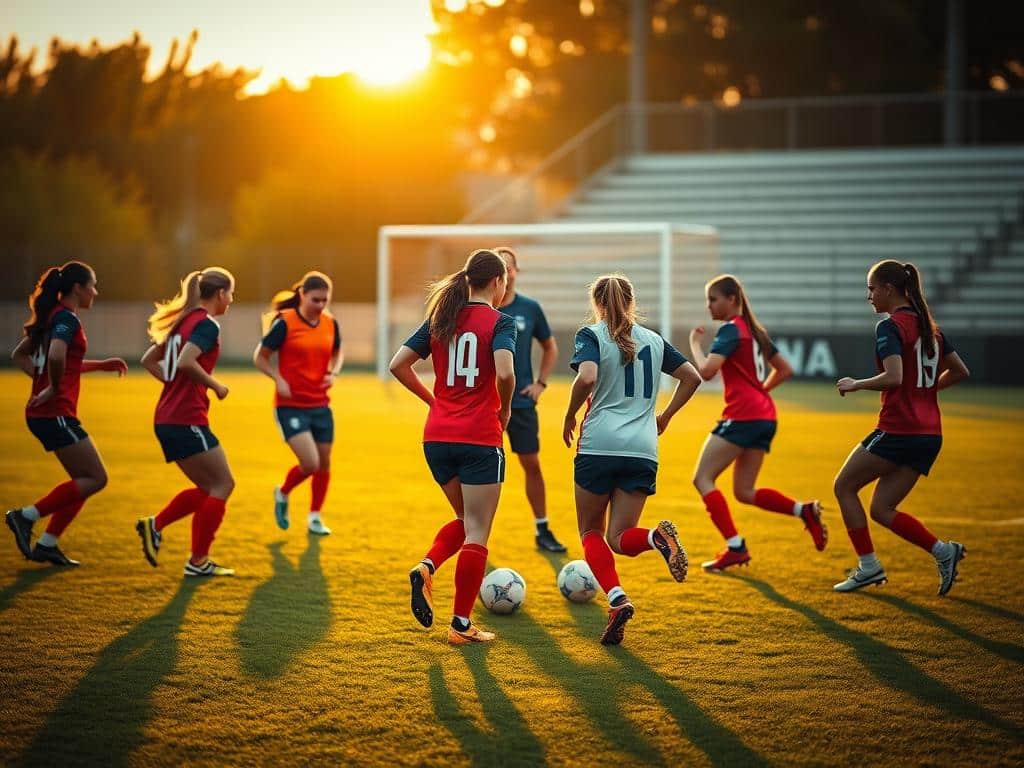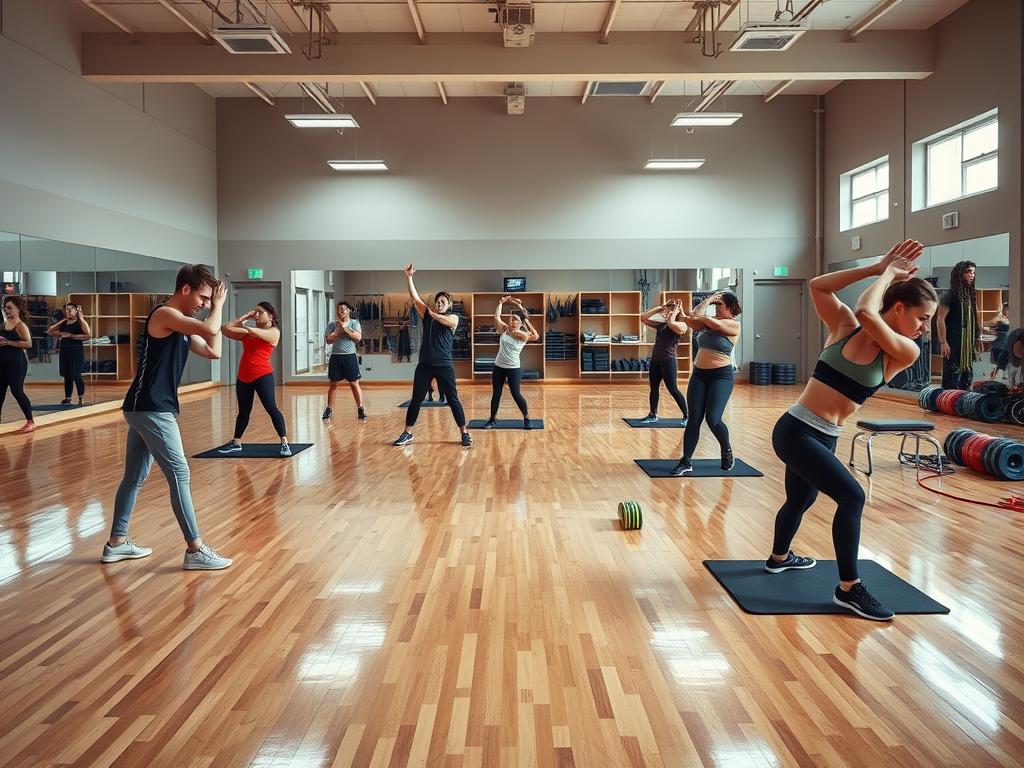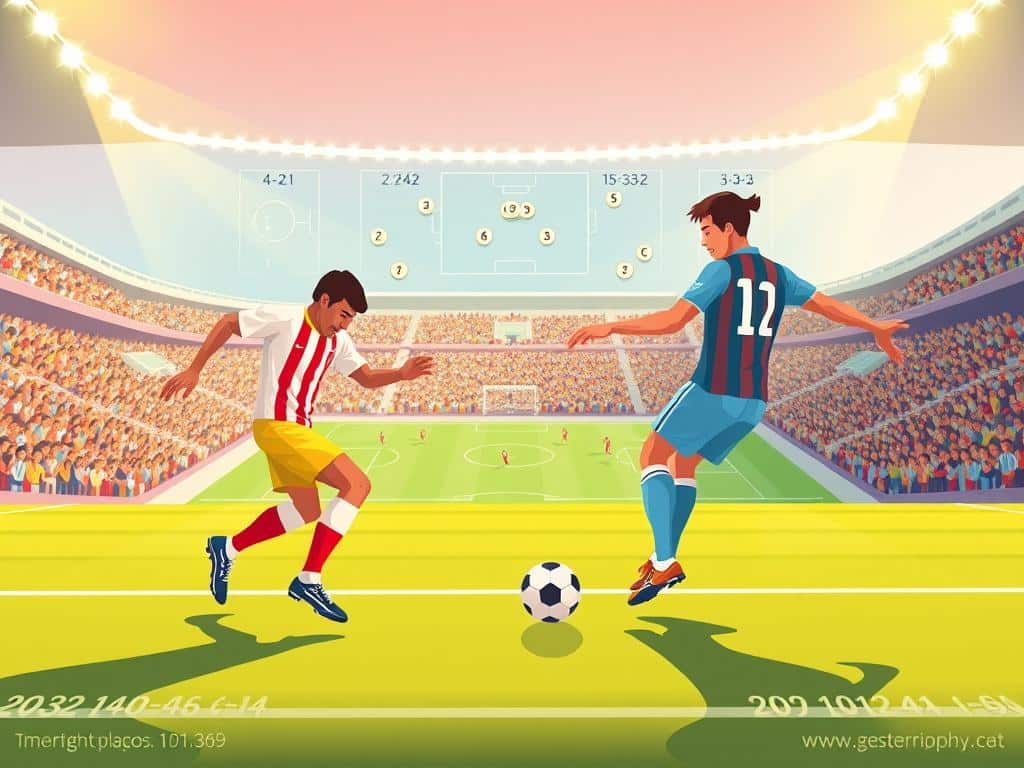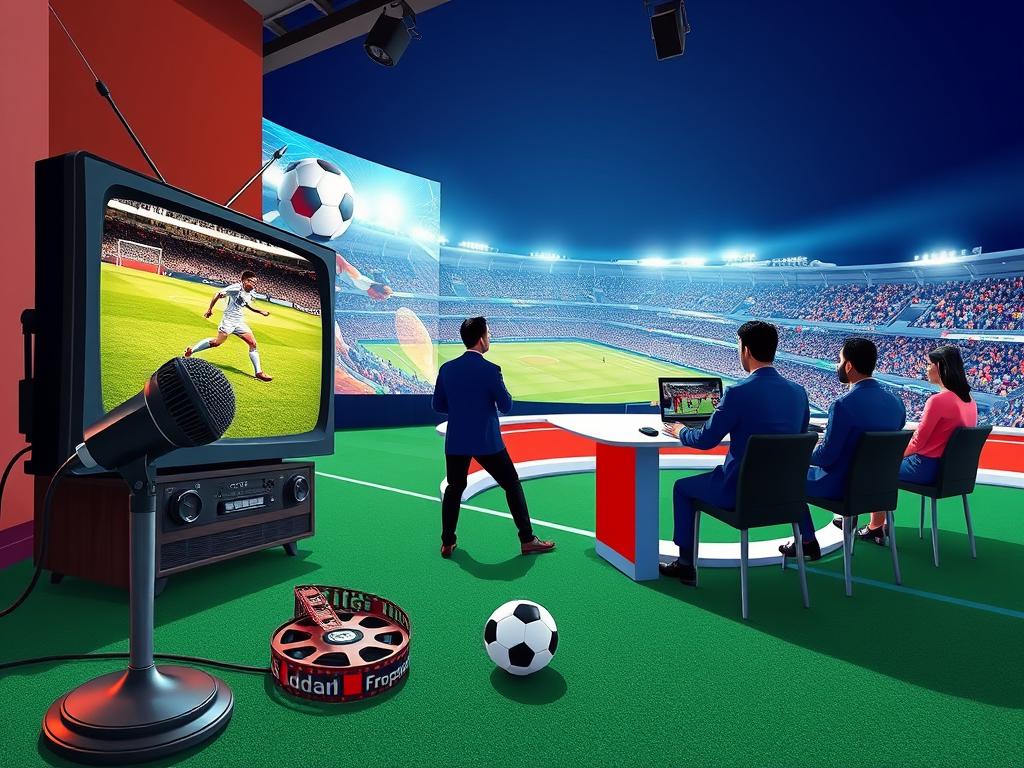Did you know a simple 15–20 minute warm-up can lower non-contact injury rates by 30–70%? The FIFA 11+ program, launched in 2006 and rolled out broadly in 2009, made that claim real in studies.
Want to stay on the field and out of the treatment room? This guide shows how a proven program and clear drills cut risk before the first whistle. You get short, sport-specific routines that build strength, balance, agility, and lower-extremity stabilization.
Practical, time-efficient, and evidence-based: perform the set twice weekly for 10–12 weeks and expect better jumping and quad/hamstring strength. Coaches and players get straightforward cues, not vague theory.
Ready to make warm-ups count? Read on for step-by-step progressions that fit practice and match day. Smart preparation earns more healthy minutes on the pitch!
Key Takeaways
- The FIFA 11+ is a short, structured warm-up with proven results.
- Routine use (2x weekly) cuts non-contact injuries significantly.
- Focuses on strength, balance, and functional stability.
- Fits into practice and match day without extra time burden.
- Clear coaching cues help players adopt the program fast.
Why injury prevention matters in soccer right now
Every match asks players to accelerate, brake, and twist in ways that test tissues to their limit. These repeated demands make smart preparation essential, not optional.
The demands of the sport: cutting, sprinting, and contact
Sharp cuts, full-tilt sprints, and shoulder-to-shoulder contact load the body rapidly. Fatigue worsens mechanics and raises the risk late in halves.
Most common non-contact injuries and where they happen
Most mishaps aren’t freak collisions. They are non-contact injuries that occur when tissues fail during sudden moves.
- Hamstring: strains on quick accelerations.
- Knee: problems during landings and cuts.
- Ankles: sprains when you decelerate or pivot.
Bottom line: train the exact systems that handle sprinting, planting, and change-of-direction loads. The FIFA 11+ targets core, eccentric hamstring strength, proprioception, dynamic stabilization, and plyometrics to lower risk and keep players on the field.
Evidence-backed warm-up: How to run the FIFA 11+ in 15-20 minutes
Want a warm-up that actually prepares players for game demands and saves time? Here it is. This program runs in three clear parts and fits into training without stealing the session.
-
Part 1 (≈8 min) — Running series:
Straight-ahead jogs between 6–10 cone pairs (5–6 m). Add hip out/hip in at each cone.
Do partner circling with a low base, shoulder contact hops with soft knees, and quick forward/back shuttles.
-
Part 2 (≈10 min) — Strength, plyometrics, balance:
Plank 20–30s x3; side plank 20–30s x3 each side. Nordic hamstring (3–5 reps) or 60s hold.
Single-leg stance with ball 30s x2 each, squats with toe raises 30s x2, vertical jumps 30s x2.
-
Part 3 (≈2 min) — Game-speed runs:
Across-pitch runs 75–80% x2, bounding 2 reps, and plant-and-cut sprints at 80–90% x2. Avoid knee valgus on landings.
| Part | Time | Primary aim | Key cue |
|---|---|---|---|
| Running series | 8 min | Raise temp & movement quality | Stay light, hips level |
| Strength & balance | 10 min | Core, hamstring, lower-limb control | Control before speed |
| Game-speed runs | 2 min | Reactive speed & cutting | No knee cave on landings |
Frequency and adherence: do the full program 2+ times weekly for 10–12 weeks to see benefits. Studies shown across reviews report a 30–70% drop in non-contact injury rates and gains in agility, jump height, and hamstring strength.
Want the full how-to and troubleshooting tips? See this concise guide: FIFA 11+ implementation tips.
Soccer injury prevention exercises you can add today
A short library of proven moves gives players more durable muscles and sharper balance fast. Pick two or three and mix them into warm-ups or cool-downs.

Nordic hamstring curl for eccentric hamstring strength
Kneel on a soft surface with a partner anchoring your ankles. Keep a straight line from shoulders to knees and lean forward slowly. Catch yourself with hands if needed. This builds true hamstring strength where it matters most.
Copenhagen plank for groin and adductor resilience
Set the top leg on a bench and lift hips to align shoulder, hip, and knee. Hold with control. This targets the inner thigh and helps during sharp cuts.
Side-lying hip abduction isometrics
Lie on your side, stabilize the pelvis, lift the top leg and hold. Short holds teach the lateral hip to stop wobble on single-leg landings.
- Reverse Nordic curl: kneel, lean back with hip extension to load quads; skip if you have active knee pain.
- Single-leg heel raises & toe touches: rise on one foot for calf-ankle stiffness; hinge and reach to train balance and hamstring control.
- Dynamic leg swings: forward/back and lateral swings wake up hips, groin, hamstring and quad chains before effort.
| Drill | Primary target | Key cue |
|---|---|---|
| Nordic curl | Hamstring | Slow lowers, controlled catch |
| Copenhagen plank | Adductors | Hips level, strong squeeze |
| Heel raises | Ankles & calves | Hold top, slow descent |
| Leg swings | Hips & hamstring | Controlled range, steady tempo |
Programming your warm-up: turning a list of drills into a reliable routine
Turn scattered drills into a reliable pre-session flow that players can run with their eyes closed.
Start by sequencing mobility, activation, then speed. This simple order saves time and builds consistency.
Time-saving template for training days vs. match days
- Training days: run the full FIFA 11+ (Parts 1–3) in 15–20 minutes. Add one or two accessory exercises that fit your level.
- Match days: prioritize Parts 1 and 3 to spark rhythm and speed. Keep load low so players arrive sharp for the game.
- Progression: only step up a level when technique is automatic. If form slips, drop back and refine.
- Checklist: mobility, activation, strength, game-speed runs.
- Use a simple roster checklist so no step gets skipped when the clock is tight.
- Aim for two full program sessions weekly to keep the protective effect rolling.
| Session | Duration | Focus | When to use |
|---|---|---|---|
| Full program | 15–20 min | Warm-up & load | Training days |
| Parts 1 & 3 | 8–10 min | Tempo & sharpness | Match day |
| Accessory set | 4–6 min | Target weak links | After core flow |
Reducing ACL injury risk: technique cues that protect knees
Small changes in how you land or cut make a big difference. When athletes keep simple alignment cues, the knee handles load better and the risk of ACL problems drops.
Don’t let knees buckle inward: landing and cutting mechanics
Protect your knees by mastering landings. Sit the hips back, absorb softly through the midfoot, and keep the knee tracking over the toes.
On cuts, plant on the outside leg with a stacked knee-hip-ankle line. Drive the torso toward your target and avoid any inward bend at the knee — the FIFA 11+ cue is clear: do not let knees buckle inward.
Improving neuromuscular control: balance, proprioception, and core
Build neuromuscular control with single-leg balance, trunk stability work, and controlled vertical jumps. Start with stick landings, then add direction changes to mirror game demands.
- Core engagement keeps hips stable so the knee can track cleanly.
- Single-leg drills with a ball sharpen proprioception for real play.
- Progression matters: perfect form before adding speed or angle.
| Focus | Key cue | How to progress | Benefit |
|---|---|---|---|
| Landing mechanics | Hips back, knees over toes | Stick → rebound → angled landings | Lower ACL risk |
| Cutting | Outside-leg plant, drive torso | Slow cuts → 80–90% speed | Safer deceleration |
| Neuromuscular control | Single-leg balance, braced core | Stable holds → perturbations with ball | Better balance and tracking |
Tailoring prevention for youth soccer players and female athletes
Good coaching adapts the warm-up to age, stage and attention span — and that matters more than you think.

Keep drills playful and short. Use the FIFA 11+ levels as a roadmap: start at level 1, master form, then move up.
Make progress a reward. Short holds, simple cues, and fun challenges help young players own good mechanics.
Addressing ACL injuries in female soccer players with targeted strength
Female athletes often benefit from added eccentric hamstring work, adductor strengthening, and trunk control.
Emphasize soft, quiet landings and a stacked knee-hip-ankle line. These cues reduce valgus risk during cuts.
Partner and side-by-side variations to build engagement and consistency
Pair drills for friendly competition and to keep focus high. Side-by-side progressions let coaches scale load while watching form.
Short, consistent sessions beat long, sporadic ones. When coaches are trained to deliver the program, broad reductions in lower-limb issues follow.
- Use levels to match challenge to skill.
- Reward clean technique before adding speed.
- Run partner drills to boost buy-in and accountability.
| Group | Focus | Progression cue | Benefit |
|---|---|---|---|
| Youth soccer players | Fun fundamentals, short holds | Level 1 → Level 2 when form is clean | Builds lasting technique |
| Female soccer players | Hamstring eccentrics, hip control | Add adductor sets and trunk drills | Lower ACL injuries risk |
| Mixed groups | Partner drills, scaled loads | Side-by-side progressions by level | Higher adherence and engagement |
Partner and ball-based drills that fit real training environments
Partner-based work brings the chaos of a game into a controlled warm-up—fast and fun. Ready to add drills that teach contact, direction change, and focus?
Circling, shoulder contact, and plant & cut with a teammate
Circling partner: run to cones, shuffle 90°, then circle each other. Stay on your toes with low hips and light steps. This builds side-to-side quickness and communication.
Shoulder contact: jump sideways into shoulder-to-shoulder contact. Land on both feet with hips and knees bent. Cue players to avoid inward knee collapse and keep landings quiet.
Plant & cut: jog 4–5 steps, plant the outside leg, then accelerate 5–7 steps at 80–90%. Repeat across the pitch with a teammate feeding or shadowing. This adds accountability and match-like timing.
- Use a ball in single-leg stance for added balance and focus: pass around the waist, under the knee, or toss and catch.
- Side-to-side shuffles reinforce lateral control so bodies handle duels and quick changes without wobble.
- Keep the field-friendly kit: cones, a partner, and a ball are enough to build game-ready patterns.
| Drill | Primary aim | Key cue |
|---|---|---|
| Circling partner | Footwork & communication | Low hips, quick light steps |
| Shoulder contact | Landing under contact | Soft knees, stacked joints |
| Plant & cut | Outside-leg plant & acceleration | Eyes up, drive forward |
Try this: blend two or three of these drills into warm-ups. Adjust tempo and distance for your group. Small, focused reps with clear cues beat long, messy sets every time!
Coaches’ playbook: implement and scale a prevention program
A clear, no‑equipment routine that fits 15–20 minutes can change a season’s availability.
Make it routine: schedule two-plus full program sessions each week and track attendance like you track touches or sprints. Consistency matters—studies shown link regular delivery to lower injury rates and better availability.
Assign roles so quality stays high. One coach runs timing and cues. Another watches knee alignment and landing positions.
- Partner with a physical therapist for a one‑hour preseason workshop to align staff on cues and progressions.
- Slot the routine into existing warm-ups for football players in multi‑sport settings to boost buy‑in.
- Use short checklists and simple KPIs—attendance, set quality, quick balance tests—to track outcomes.
| Action | Who | Impact |
|---|---|---|
| Weekly schedule | Head coach | Higher adherence |
| Staff workshop | Physical therapist | Consistent cues |
| Progression plan | Assistants | Safer, stronger bodies |
Share why the program works with players. When athletes see reduced risk and better performance, effort and buy‑in rise. Keep prevention visible on practice plans so it never gets cut when time is tight.
Take the field stronger: put this prevention plan into action
Ready to turn practice time into lasting gains on the pitch? Pick two days this week to run the full 15–20 minute program and slot a short tune-up on a third day. Consistency is how you help prevent setbacks and build real strength.
Give yourself four to six weeks to feel changes: firmer hamstring control, steadier knee tracking, and sharper cuts. On match day, focus on the running and game‑speed parts to stay sharp without overloading.
Log sessions, note side‑to‑side wins, and add small accessory work for weak links like calf‑ankle stiffness or lateral hip strength. Female athletes gain added ACL and landing‑mechanics protection when they stick with the plan.
Make this program your default warm‑up: do the work, own the cues, and watch risk drop while performance rises.







